
This research is based on unique data collected from our proprietary audience of publisher, agency, brand and tech insiders. It’s available to Digiday+ members. More from the series →
This is the fourth part of a research series on a set of emerging technologies in media and marketing. Read our other reports on virtual reality, augmented reality and chatbots.
In a 1995 book, MIT Media Lab co-founder Nicholas Negroponte described a personalized digital newspaper that included only items that were of interest or relevance to the user. Called “The Daily Me,” Negroponte’s vision has now shifted to reality.
Digiday Research surveyed 172 executives from media and marketing companies to uncover their approaches to data-driven personalization — and the development of the market. Key findings:
- Sixty-seven percent of marketers and 56 percent of publishers say personalizing content is a high or very high priority.
- Over half of both marketers and publishers can only tailor their content to the page context, not to individual users’ attributes.
- Most popular personalization attributes, according to marketers: location, age, hobbies and lifestyles and financial or purchase data
- Most popular personalization attributes, according to publishers: browser history, location and device type
- Seventy-two percent of marketers and 56 percent of publishers do not use machine learning to personalize their content or user experience.
Sixty-seven percent of marketers say personalizing content is a high or very high priority. Publishers follow closely behind, with 56 percent saying the same.
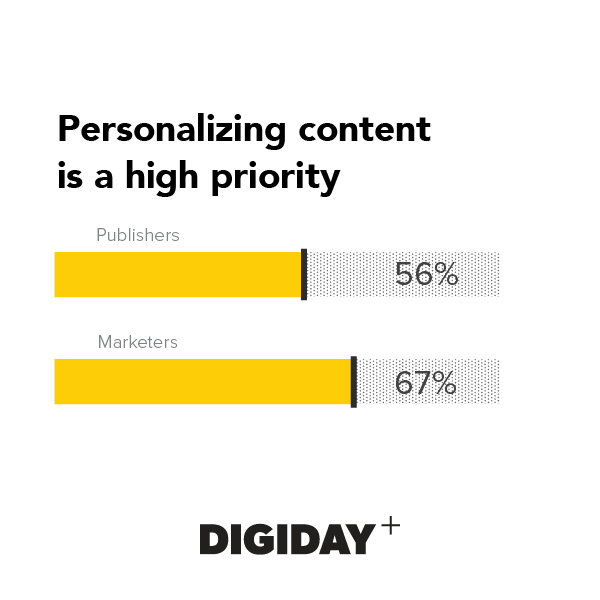
“An area of exploration for us is how to get people in the organization to think about the surfaces of interaction and the technologies that drive personalization,” said Marc Lavallee, executive director of The New York Times’ Story[X] innovation division. “These help unlock a single view of our customer.”
This is, after all, the promise of what technologists have long called Web 3.0: a semantic, artificially intelligent, personalized web powered by data-rich profiles.
“When I have a moment to interact with a brand, it needs to recognize the time, money and effort that I’ve put into it,” said Derek Fridman, global executive experience director at Huge. “It needs to be able to serve up just the perfect thing for me to keep the conversation going.”
According to CEB Marketing, the average brand already spends 14 percent of its entire marketing budget on personalization, with plans to increase. However, 59 percent of both marketers and publishers are only able to tailor their content to the page context on which it appears, not to the individual user experiencing it.
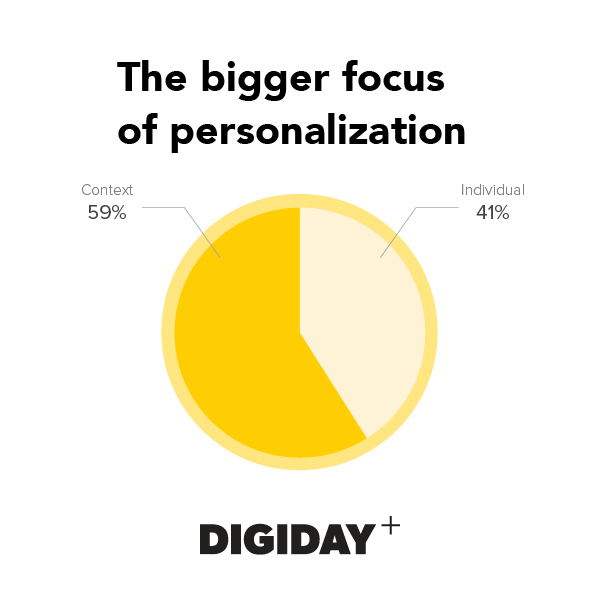
When marketers are able to personalize their content on individual lines, the attributes used most often are location (64 percent), age (52 percent) and hobbies and lifestyles (49 percent).
One from that set syncs up with an attribute marketers see the most potential with: hobby and lifestyle data (41 percent). The other attribute with the most potential ranks last in terms of current use: financial or purchase data (40 percent). This is especially disappointing given that data point’s potential to stand as a proxy for purchase intent or to supply buying history, a key tactic for marketers.
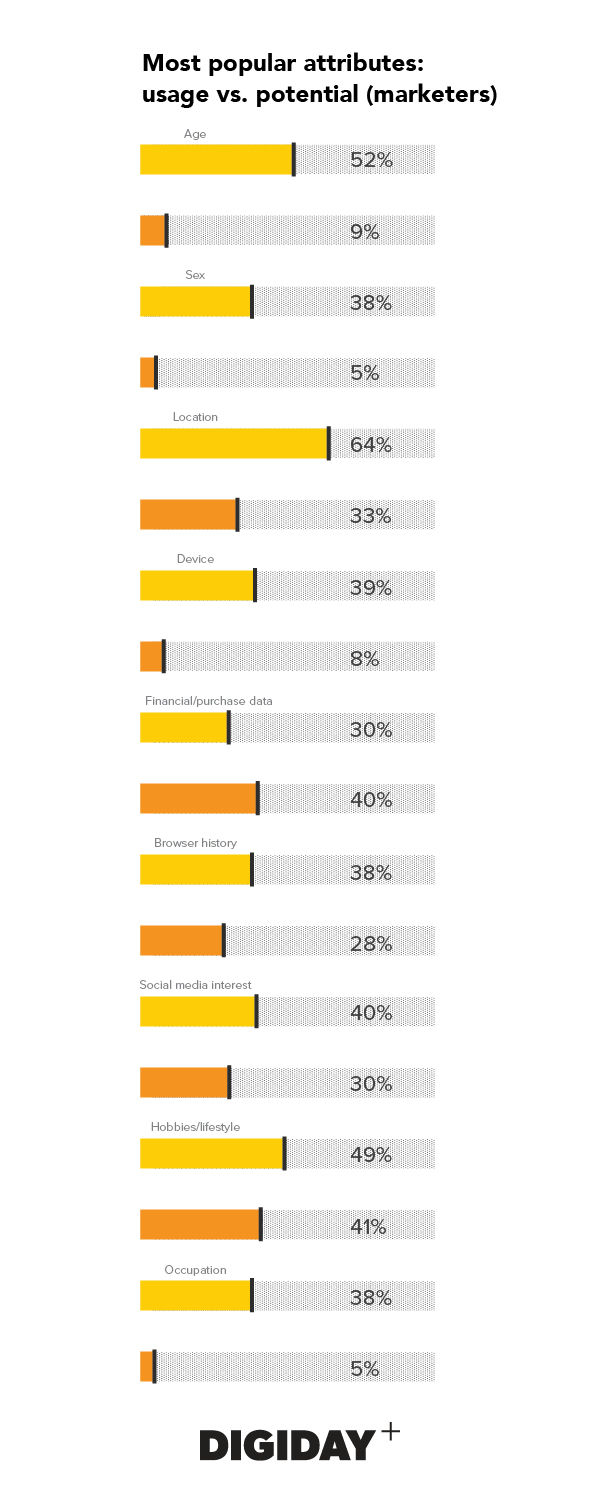
Publishers have different objectives when it comes to personalization, and these are reflected in the attributes they employ: browser history (55 percent), location (53 percent) and device type (49 percent). Emphasis is clearly on the consumption context here, especially what content was consumed in a user’s browsing sequence. Similarly, publishers believe that browser history has the most potential as a factor in personalization.
Of course, hypertargeted, personal editions aren’t for everyone. Sometimes, they even go against a legacy ethos, especially in an era of “relative truth.” But even the most storied publications have the potential to change.
“The Times has historically been allergic to personalization,” said Andrew Phelps, a member of Story[X]. “There’s something very special about that shared experience of The New York Times: I’m looking at the same thing as the president, my congressman or somebody halfway around the world. That’s not something we ever want to do away with. But what we’re realizing now is that we can preserve that special, shared experience and, beyond the front page, create much more tailored, relevant experiences.”
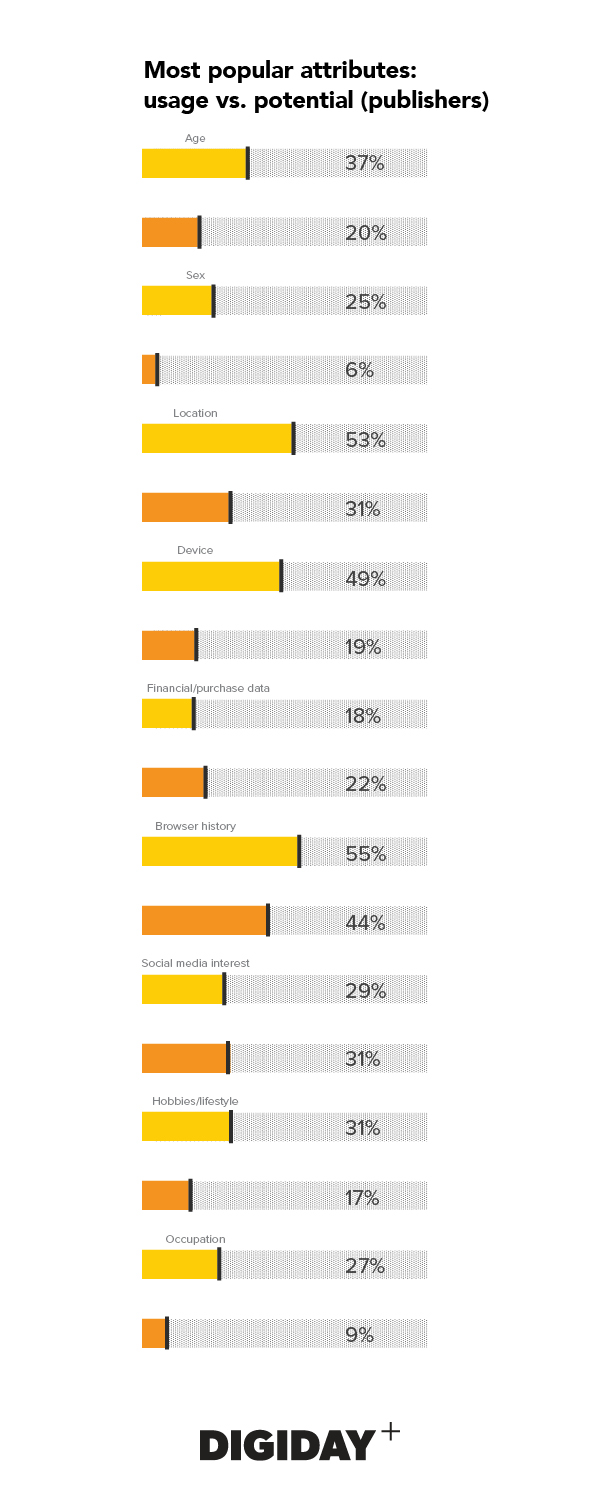
Hurdles to personalization aren’t always ideological. They can also be technical. An overwhelming 72 percent of marketers and 56 percent of publishers are not using machine learning to personalize their content or user experience. This means creative or editorial teams must craft every tailored piece of content manually.
“Not enough brands are investing in personalization and AI or machine learning,” said Adam Simon, director of strategy at IPG Media Lab. “A lot of brands are already close to the consumer and have a lot of consumer data. We’ve seen a lot of industries disrupted by direct consumer sales that we never thought were going to do direct-to-consumer. That’s going to become really important over the next 10 years.”
But just because more brands have access to consumer data doesn’t mean they can use it or even legally capture it. With brand-safety concerns rampant, giving up control to even the smartest algorithms isn’t the optimal strategy to most brands.
And other data concerns loom on the horizon that could have a chilling effect on personalization based on first-party data. In a solemn demonstration of the challenge, 87 percent of marketers take consumer data security seriously or very seriously.
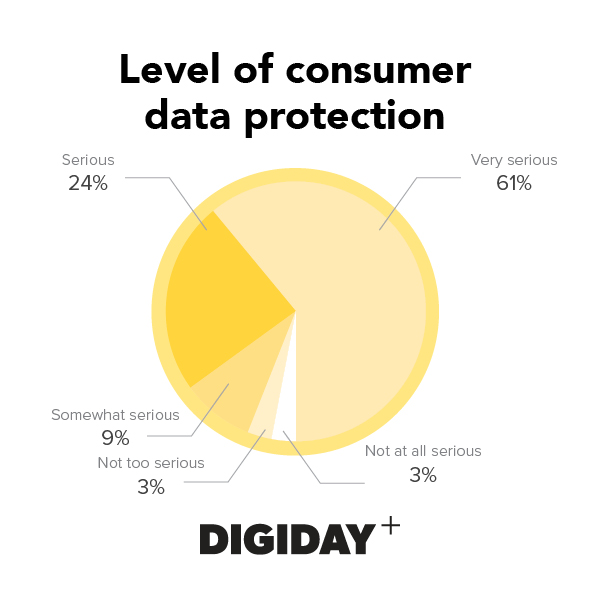
“Every time we talk about consumer data, I make it a point to warn everyone in the room,” said Simon. “[You] don’t want to be the brand that has a massive leak of consumer data. It happens all the time. It’s a lot harder to do any of this stuff in Europe, and it’s going to get even harder.” Simon is alluding to the European Union’s General Data Protection Regulation, a set of legal standards that will make many forms of involuntary data collection illegal, which will take effect in May 2018.
To avoid security risks and bolster their infrastructure, a 59 percent majority of brands are looking to more heavily vetted third-party partners rather than investing more in in-house solutions.
More in Marketing

Lowe’s wants to do more with AI shopping in 2026
Mylow, a shopping assistant powered by ChatGPT that launched in March, is already driving double the conversion rate for online shoppers.

‘This isn’t the old pre-roll world’: YouTube has been talking TV — now it’s selling that way
YouTube is ramping up efforts to get TV’s largest advertisers to move more of their budget into its platform.

As every screen becomes shoppable, attribution problems resurface
As more media environments become points of purchase, attribution and measurement remain the thorn in the side of commerce execs.





